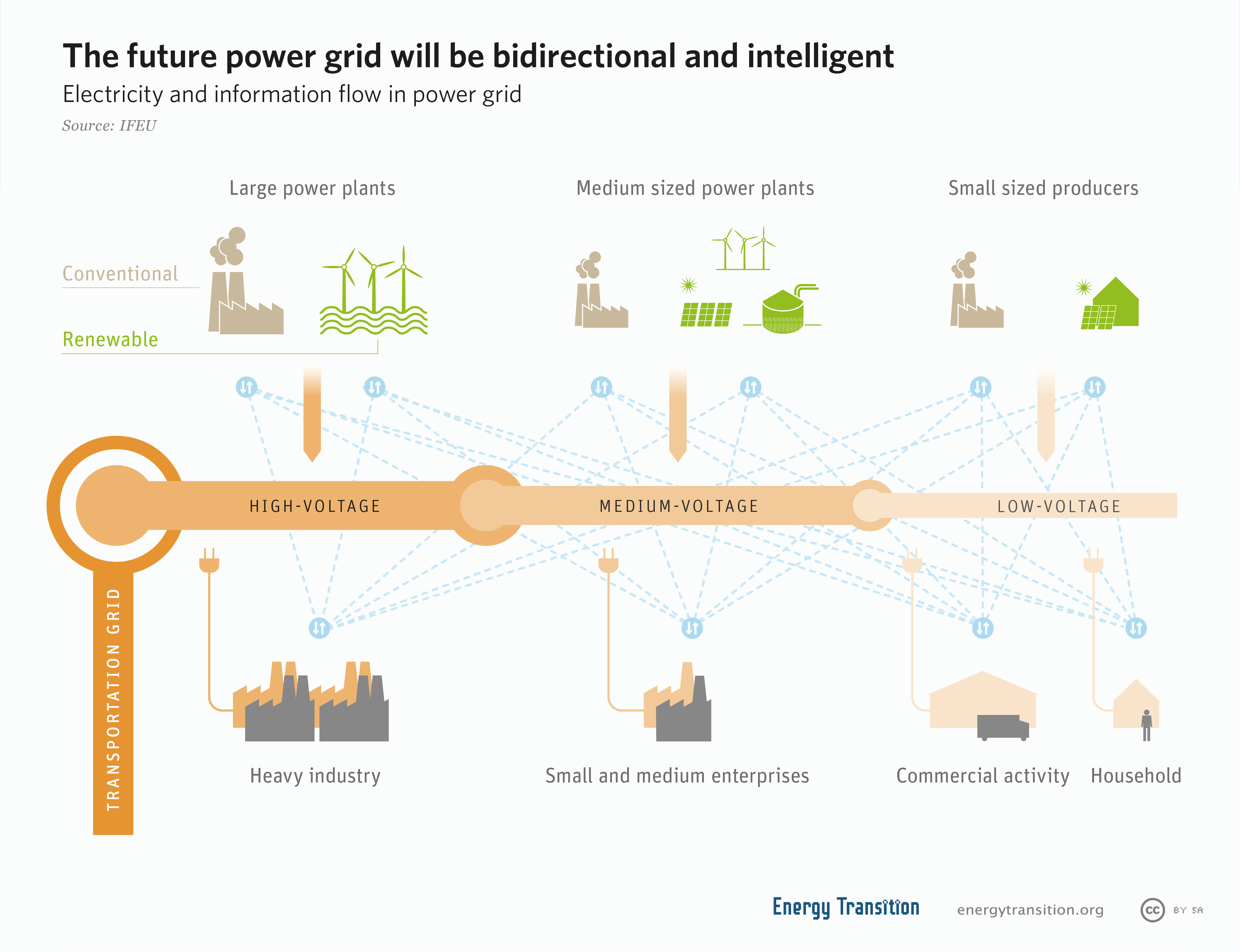The energy transition will need an expanded, adapted grid to cope with more renewable power. Neither has been progressing fast enough, so the German Parliament has passed the Act on Accelerating Grid Expansion. Official plans are in place, but several of the projects remain contested.
Why renewables need a different kind of grid
The Energiewende will require properly functioning infrastructure; in particular, the electrical grid will have to be adapted and be made smarter. The current grid is designed to take power from central power stations to consumers. How much energy is generated can be decided in advance. With wind turbines and solar panels, energy generation is determined by weather conditions, so the electrical system must become more flexible.

Large power plants will continue to export power to the transit grid, but it will need to be changed so that power from wind turbines (both onshore and offshore) in the north can reach consumer centers in the west and the south. These lines will also be used for power trading.
At the low-voltage and medium-voltage levels of the grid, small, distributed generators such as solar arrays, cogeneration units, individual wind turbines, and small wind farms will be connected, and special controls will ensure that everything runs smoothly. The grid will become more intelligent.
Act on Accelerating Grid Expansion (NABEG)
In 2011, the German Parliament passed the Act on Accelerating Grid Expansion (NABEG). It calls for a review of ultra-high voltage lines by Germany’s Network Agency and for high-voltage (110- kilovolt) lines to be installed as underground cables as a rule. In addition, there is to be great public input and transparency at an early stage of planning to increase public acceptance. In 2014, two drafts of the Grid Development Plan analyzed the necessity of creating a “Federal Need Plan”, which would become law.
The goal is not just grid expansion; existing grids will also be upgraded and optimized. For instance, special temperature-resistant power lines could be used to transport greater amounts of electricity without requiring further lines to be installed. Temperature monitoring would also allow power lines to be used closer to full capacity when the wind cools them off – which generally happens when there is also a lot of wind power. The NABEG was complemented by a special law to promote underground cables, particularly for long-distance high voltage direct current lines.
However, up until now, grid expansion has not been fast enough. See: Challenges: Technological challenges.